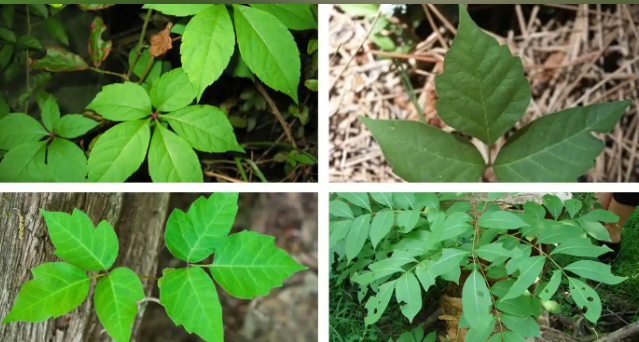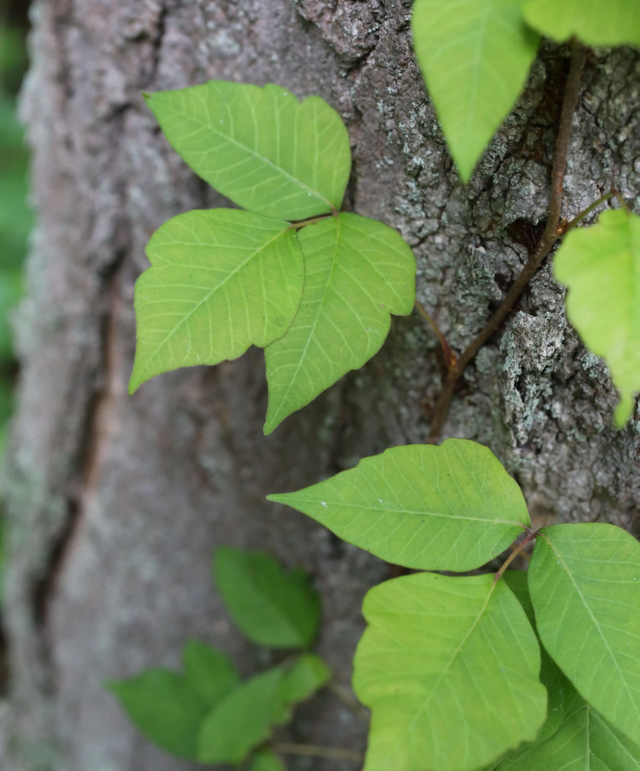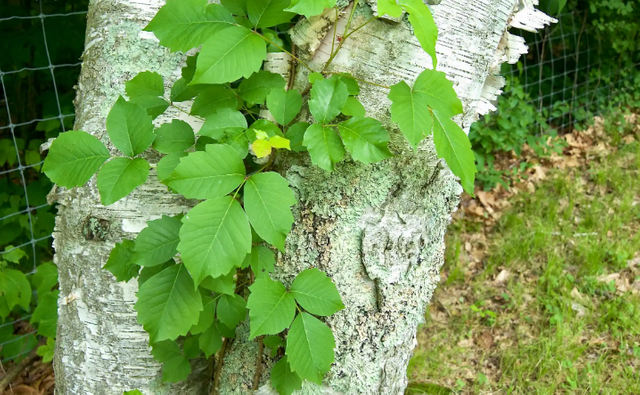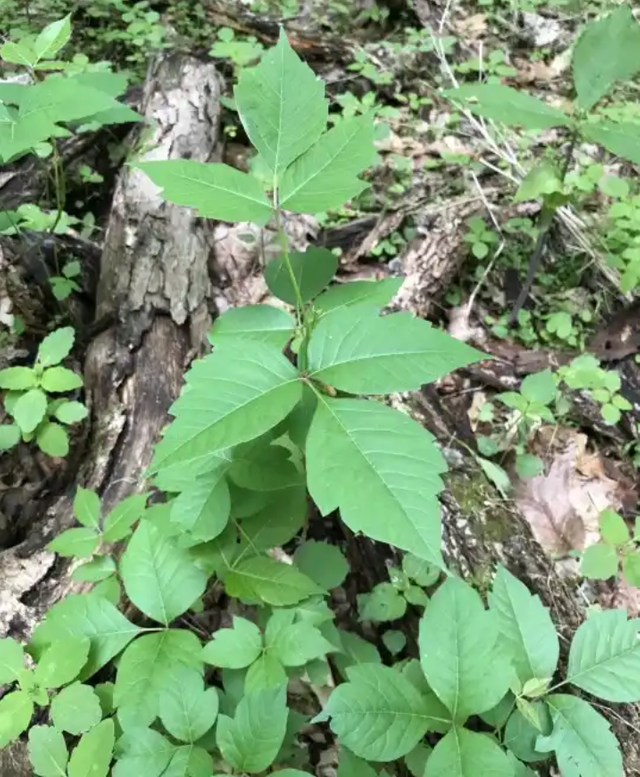HISTORY OF POISON IVY//WED, NOV, 23rd,2022
No Ill Nature:
The Surprising History and Science of Poison Ivy and Its Relatives

One October day in 1784 Philadelphia horticulturalist William Bartram wrote out a list of 220 “American Trees, Shrubs, & herbs” in his fine, flowing handwriting. He was packing up seeds and young plants to send across the Atlantic, as he had many times before. European collectors were eager to buy New World trees and plants, whether useful, ornamental, or simply unusual. Bartram’s shipment included 12 oak species, 9 different pines, and 3 kinds of plums, along with such flowering plants as sunflowers and morning glories. Numbers 114 and 120 on the list, bracketing 5 varieties of grapes, were a bit different: “Rhus vernix” and “Rhus radicans,” known to us today as poison sumac and poison ivy.
It may seem incredible that Bartram offered these noxious plants for sale and that people in Europe actually bought them. For most people poison ivy has long meant just one thing: suffering. The common three-leaved plant and its relatives—poison oak and poison sumac, found in North America, and the lacquer tree, native to Asia—all contain urushiol, an organic compound that sets off violent allergic reactions in most humans. But as Bartram’s packing list suggests, there is more to these plants than the painful, itchy rashes they cause. Over the centuries intrepid botanists, daring physicians, master craftsmen, and persistent chemists have looked for the good side of poisonous plants. These vines, shrubs, and trees have been collected as exotic garden curiosities, have been sourced for medicine that might cure rather than harm, and have been harvested for the sticky sap that gives lacquerware its sheen.

The Poisoned Weeds
In 1624 explorer John Smith published the first written account of poison ivy, basing it on an unpublished manuscript by Nathaniel Butler, who learned about the plant while governor of Bermuda. Smith’s brief description neatly summarizes the plant’s appearance and irritant effects: “The poisoned weed is much in shape like our English Ivy, but being but touched, causeth rednesse, itching, and lastly blisters.”
Both men, however, went on to defend the plant. Since the blisters, in Smith’s words, “after a while passe away of themselves without further harme, yet because for the time they are somewhat painfull, [the plant] hath got it selfe an ill name, although questionlesse of no ill nature.” The writers evidently felt that a temporary rash was not enough to brand the plant as “poison,” but the nickname stuck. Later authors would always warn of poison ivy’s dangers, though only a few intrepid souls would pick up on Butler’s and Smith’s suggestion that it and countless other New World plants had the potential for “many usefull employments, which time and industry no doubt will one day discover

For the next several decades poison ivy remained an exotic oddity, just one of the thousands of new and interesting plants found in the Americas. By 1640 travelers and settlers had gathered the plant or its seed-containing berries in the wild—cautiously, one presumes—and sent them to Europe to be cultivated in the English royal gardens at Kew, the gardens of the Faculty of Medicine in Paris, and a few other locations. Botanists noted the plant’s properties and published it with names that reflected its appearance and North American origins, such as Edera trifolia canadensis and Hedera trifolia virginiensis (trefoil or three-leaved ivy of Canada or Virginia), sometimes with illustrations showing its leaves, roots, and berries.
By 1804 both poison ivy and poison sumac (perhaps descendants of the plants William Bartram sent to Europe in the 1780s) were flourishing near Paris in the gardens of Empress Joséphine Bonaparte, who was an avid amateur botanist and plant collector. Renowned flower artist Pierre-Joseph Redouté, famed for his gorgeous depictions of roses and lilies, even drew a poison ivy plant with its berries for a luxury publication on native and imported trees and shrubs cultivated in France. Though known to some elite botanists in Great Britain and Continental Europe, poison ivy never became truly popular since its attractive appearance could not outweigh its noxious powers. As the authors of the book illustrated by Redouté recommended, the plant and its relatives were best “kept away from ornamental gardens and relegated to those of the curious.”

These poisonous plants also intrigued medical practitioners. Accounts of experiments with poison ivy as a medicine are scattered throughout 18th- and 19th-century scientific and medical publications. At a time when nearly all medicines came from plants and being a physician or pharmacist required a working knowledge of botany, it was logical to assume that a plant with such a strong effect on the body had the potential for healing.
André-Ignace-Joseph Dufresnoy, an army physician and medical professor from Valenciennes in northern France, became one of poison ivy’s most fervent supporters around 1780. Like many physician-botanists of the era, he collected unusual plants for his personal medicinal garden. He also gave botany lectures that were open to the general public. One day Dufresnoy showed some leaves of his “Rhus-Radicans” and spoke about its irritant effects. A young florist in the audience could not believe that such an innocent-looking plant could be so powerful. After the lecture he rubbed the leaves vigorously in his hands, egged on by one of Dufresnoy’s students. The florist soon regretted his impulsive act, but after the painful swelling and rash finally cleared, he came to tell the physician that an ugly old sore on his wrist had completely vanished.
Dufresnoy was thrilled with this apparent miracle cure and immediately began concocting medicines from poison ivy. To avoid causing rashes in his patients he boiled poison ivy leaves to make an infusion for internal use, first drinking it himself as a test. He reported that even a strong infusion made with 12 leaves produced only mild side effects: his stomach became slightly upset and his sweating and urination increased. He then prescribed the infusion, and later a distilled extract from his poison ivy plants, to people suffering a range of skin maladies and even to some with paralysis of the legs, claiming positive results in many cases.
Cc:@Seo-BOSS
THANKS SO MUCH EVERYONE